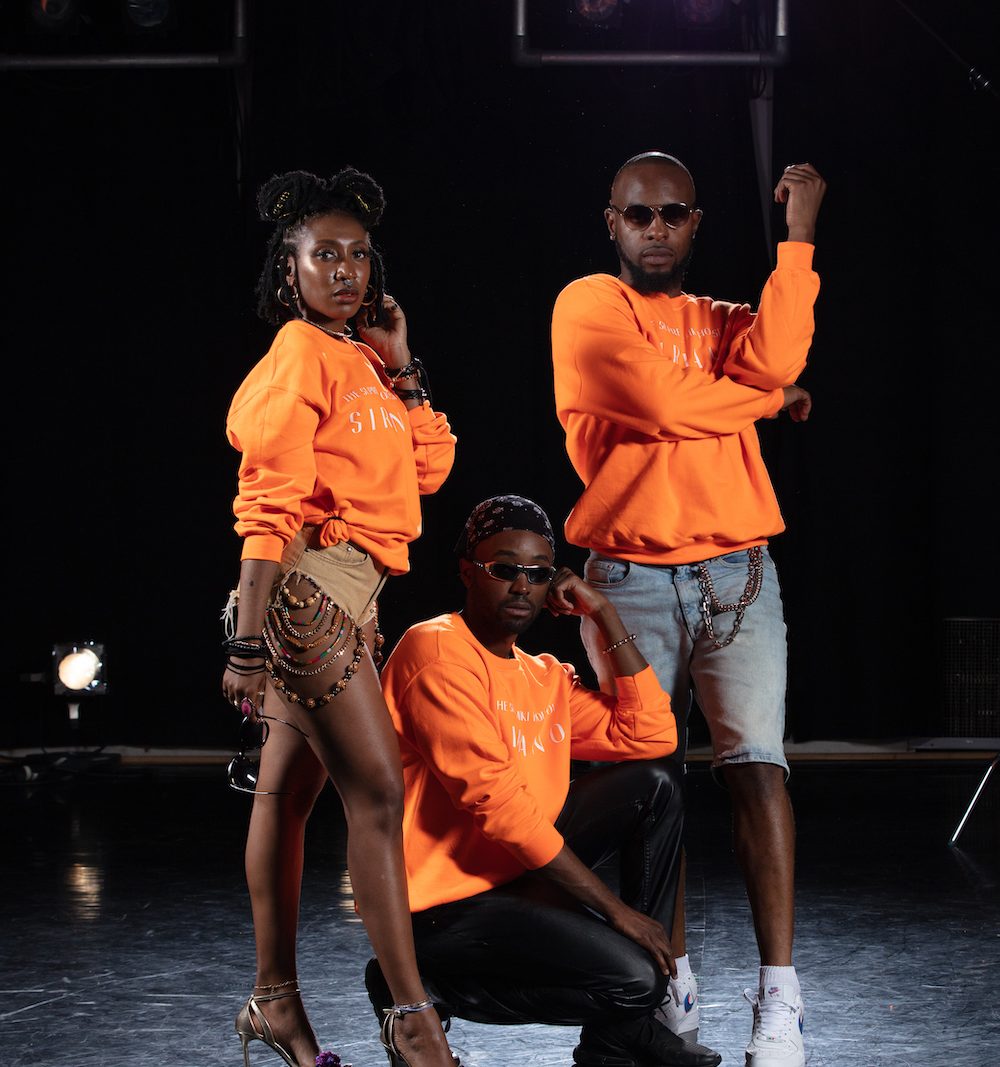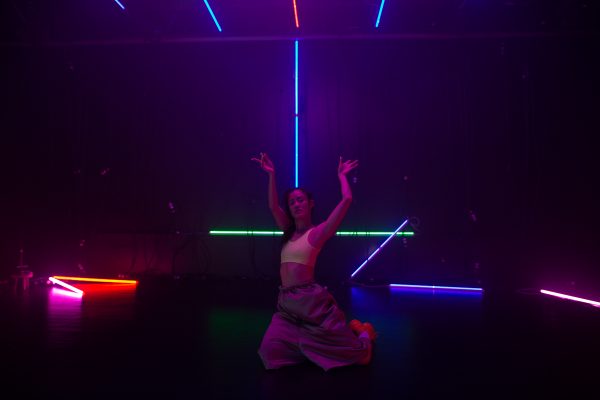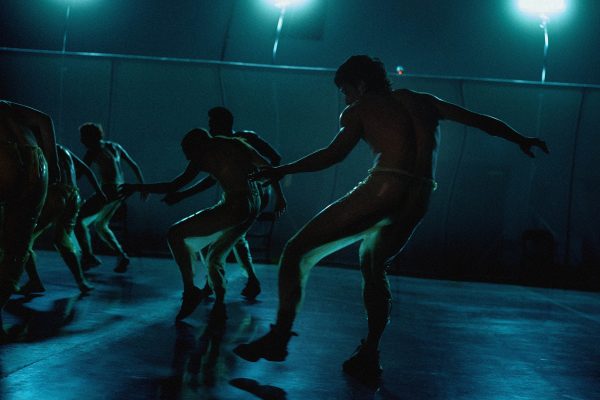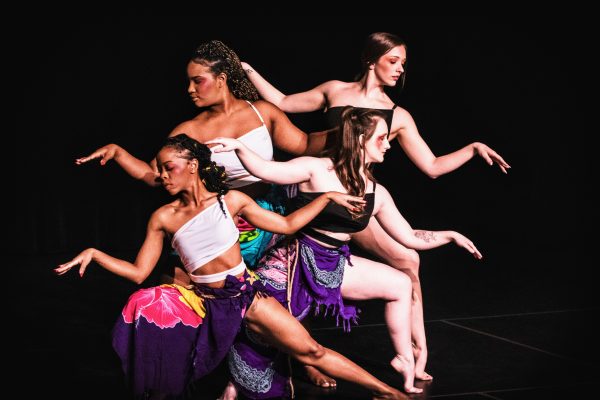Getting to know your Fruit and The Grand March of the House of Siriano were directed by William Yong and co-produced in partnership between DanceWorks, Fall for Dance North and The Citadel: Ross Centre for Dance. On October 7th, the work premiered as a mix of pre-recorded material and live-to-air presentation. The show will be available until Nov 5 with a livestream pass.*
*Updated on October 25, 2023 to include the names of all producers involved in the production.
In week four of their annual festival, Fall for Dance North premiered a unique double bill. Complementary programming placed the works of Sara Porter and Danah Rosales side by side, their contrasting creative languages using the digital mediums of pre-recorded film and livestreamed performance.
Getting to know your Fruit’s opening line of questioning holds Porter, creator and performer, in a tight frame as she asks the audience, “Have you ever noticed the word ‘sexes’ goes both ways?” As opening credits begin to roll, there is a sense that there is much more suggestive, curious inquiry to come. The 35-minute dancefilm covers themes like memory, identity and Queerness, all traversed courageously by the expressive Porter. One moment she is dressed like a banana, scribbling pseudo-serious equations on a blackboard. In the next, she intimately outlines the tensions of growing up Queer in religious environments. The fluctuation between flights of fancy and profound personal explorations is rendered even more complex as the artist unrolls an assembly of possible storytelling lenses, like autobiography, memoir and the personal essay. A particularly curious moment is the definition of autofiction as the “[mix of] two conflicting forms. You can tell your story, but it doesn’t matter if it’s true.” We are encouraged to rethink whether Porter’s stories are real, if memory is as infallible as we think, if objective truth even matters when emotion can be so much stronger.
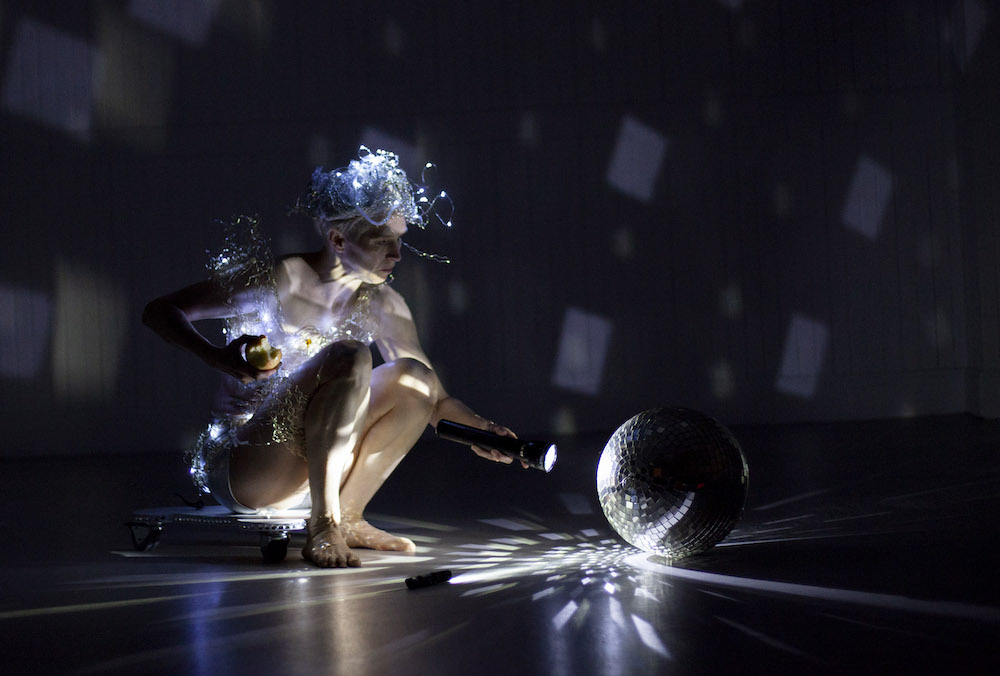
Lighting and set design give close-ups of Porter a haunting quality, creating a stylized interior world unique to each monologue. Dance scenes are inserted into large environments that become characters of their own. A breathtaking example of this shows Porter in a sustained plié, in a room full of oranges, grasping at the fruit with an almost sensuous longing. The yearning stretch in her reach is poetic both in its physicality and in what it might symbolize: a yearning for something just out of reach.
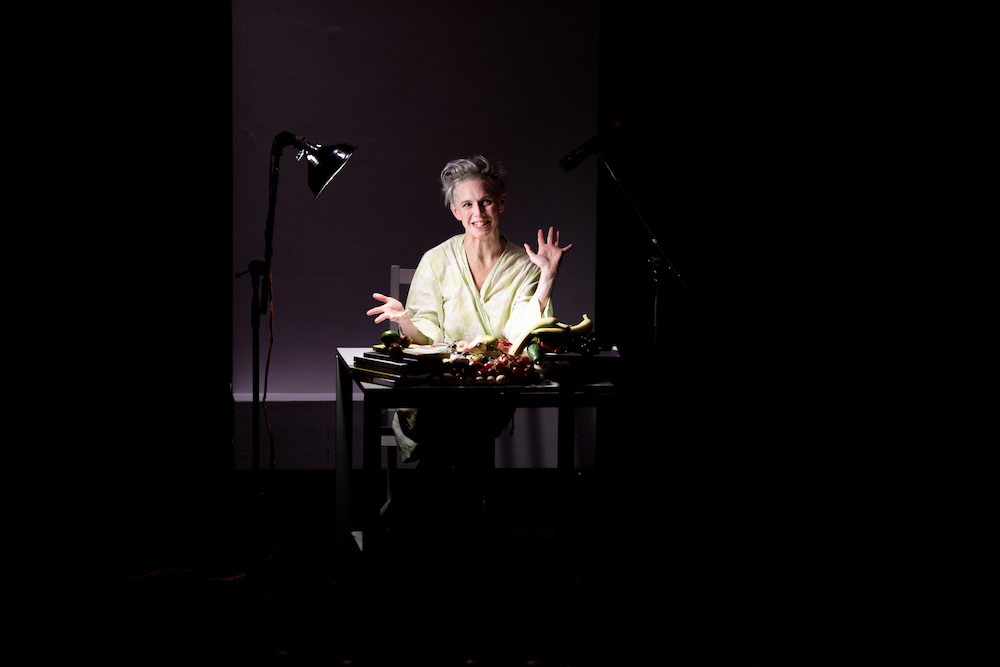
Unlearning facts and beliefs around fruit (“Did you know a strawberry is not a berry?”) mirrors her simultaneous learning and unlearning of personal ideas around gender and sexuality. The score amplifies this tumult at times and holds us soothingly at others. By the end of Getting to know your Fruit, I feel lucky, not only to have gotten to know the artist but also to have the question turned towards me: “What kind of fruit are you?” The audience can only hope to afford ourselves the same care that Porter has afforded herself.
The Grand March of the House of Siriano follows by pulling the audience out of Porter’s interior exploration and throwing us into the vibrant world of the House of Siriano. Choreographer Danah Rosales is exceptionally generous in crafting a work surrounding her public persona as Mother Maldita of the House of Siriano and her personal artistic practice. The piece opens onto a session in Toronto’s Underpass Park, and members of the House of Siriano are introduced in an exhilarating montage. Orange crewneck sweaters conjure the feeling of an elite team in their warm-ups, practising with athletic vigour as their house chants for each other in support. The introduction transitions into a theatre setting, fading into the House of Siriano chant already in progress.
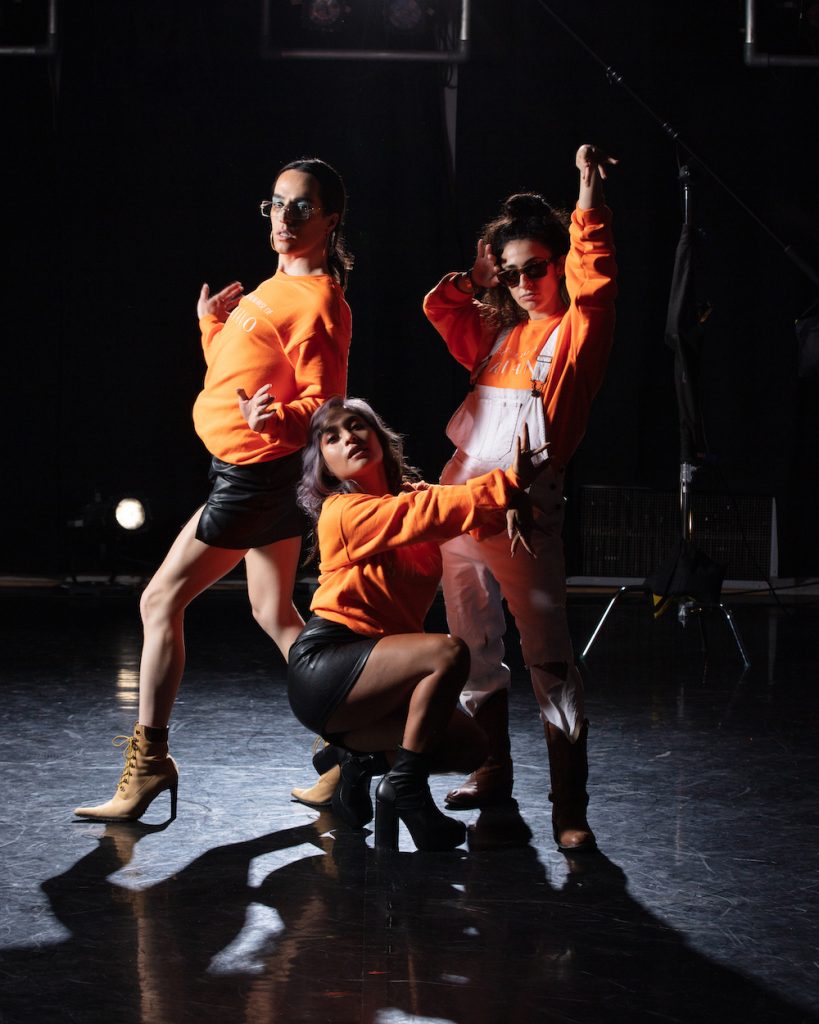
The scene reveals Princess Myst, Father Bam Bam and Legendary Founder Twysted passing off the mic, naming themselves and hyping each other up. The improvised chanting called “commentating” is a feat in itself, producing unique rhythms while using clever wordplay to allude to the virtues of the House of Siriano. This also functions as an act of naming oneself and those around you, and this mutual recognition becomes a running theme as the Grand March proceeds through the rest of the categories. Whether it is the technical skill of Father Bam Bam’s Hands Performance solo or the acrobatic ease brought by Mother Maldita, Jaws and Alegra through vogue, these performers are boldly presenting themselves in all their artistic prowess.
The inclusion of diegetic sound captures the connection between performers as Alegra exclaims, “Let’s go bitch!” right before the three launch into a slinky section of choreography. This inclusion marks one of many testaments to Rosales’s devotion to the craft. Though she staged and ordered the show artfully, she still knows exactly where to let the spontaneity and freedom of ballroom breathe. And what a treat it is to experience these free moments, the feeling of seeing something that has never happened before and likely will never happen again. This is what binds the audience together in witnessing culture – we spectators and performers alone share this unique moment, this experience. The care in representing every category in the Grand March, like Runway and Sex Siren, does not go unnoticed. Rosales’s work is the result of a long-term relationship with both ballroom culture and her own artistic voice, and the product is a resoundingly clear triumph.
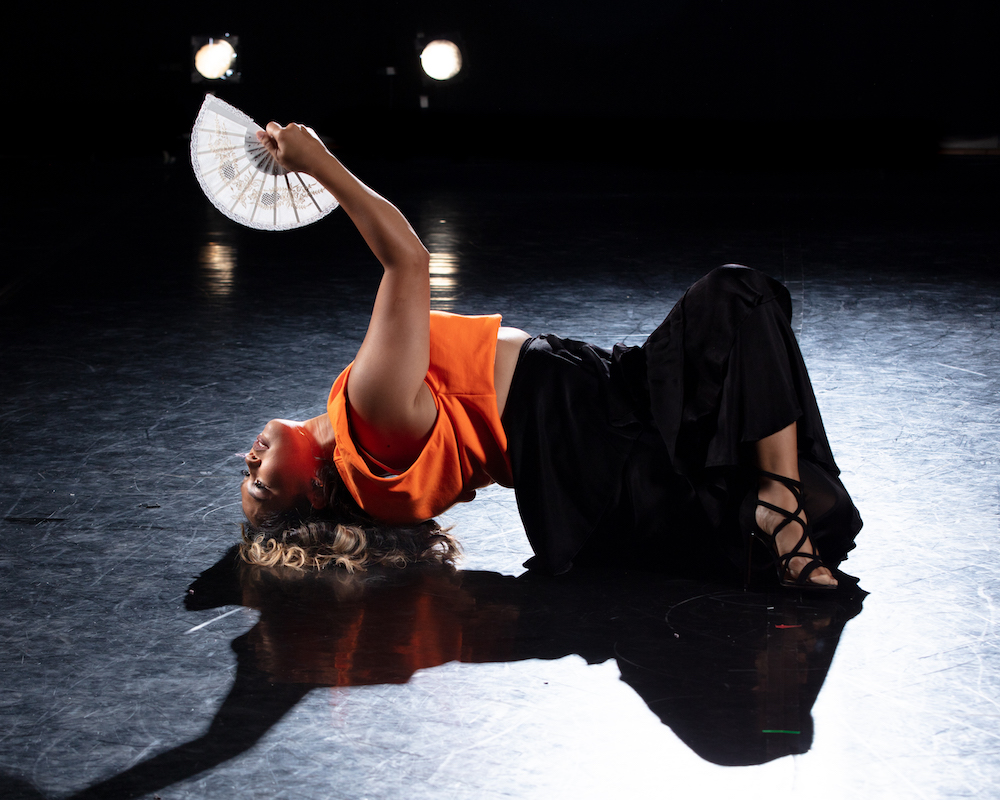
Adapting to new digital needs, director William Yong uses every tool at his disposal to bring elements of in-person performance to the screen. The crafted lighting in both works allows the camera to become another dynamic of the performer’s voice, directing focus sometimes subtly and gracefully, other times with an intense clarity. Yong makes certain the medium of film doesn’t depersonalize the performance but rather draws you in, maybe more intimately than expected.
The Fall for Dance North program notes say, “Front and centre, these artists re-claim space for themselves. And also for others.” The theme of space is profoundly set before either work starts. It arrives in the short piece performed by Christine Friday of Friday Creeations that followed a textual land acknowledgement. A powerful movement devotion to Turtle Island and the Indigenous Peoples of Tkaronto concludes with Dr Deb’s voice-over: “We are all related. … Nikaanaganaa.” How fitting that no matter how different these two works are, they are tied through creating space, for oneself and for community. It is in sharing this space that we’re reminded: we are all related.
Tagged:
